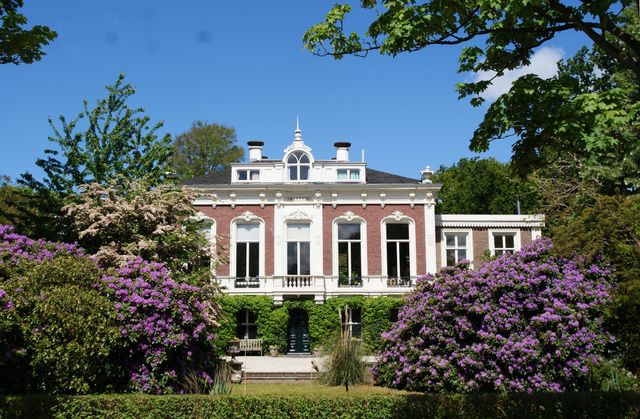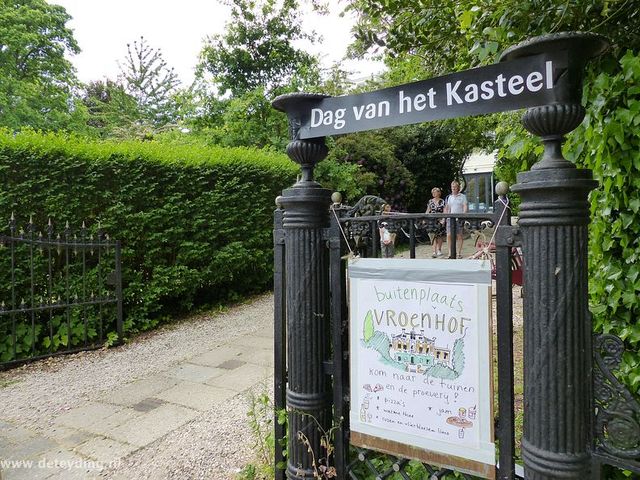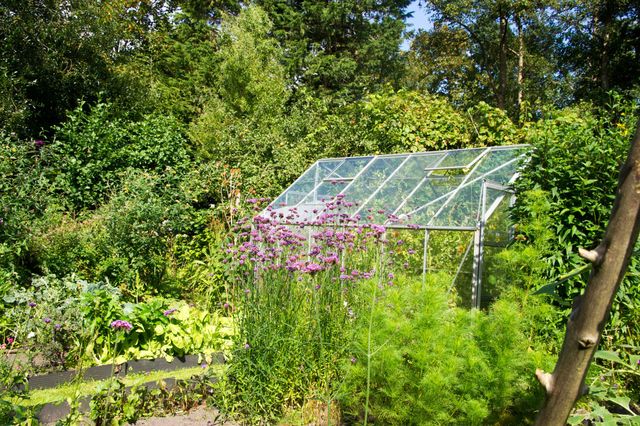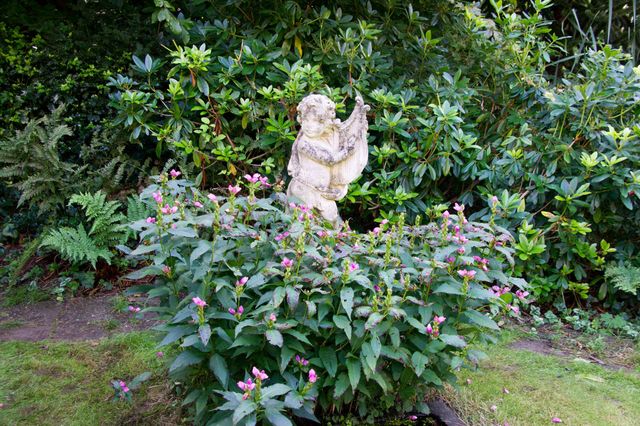Buitenplaats Vroenhof

The country estate with the house, which is now called Vroenhof, was originally built in the seventeenth century, at a time when the elite in the cities were looking for summer relaxation in rural surroundings.
Vroenhof House has a stately appearance and is built in an eclectic style, a style in which the best elements from various styles meet. The house consists of two floors above a basement. The house consists of a square building with two-storey side extensions each with flat roofs. The fronts of these side wings recede slightly in relation to the fronts of the main building. The main building of the Vroenhof is covered by a hipped roof, in which a particularly shaped dormer is built at the front. On both sides of this, at the corners of the house, is the model of a garden vase.
Above the main entrance, a balcony h…
Vroenhof House has a stately appearance and is built in an eclectic style, a style in which the best elements from various styles meet. The house consists of two floors above a basement. The house consists of a square building with two-storey side extensions each with flat roofs. The fronts of these side wings recede slightly in relation to the fronts of the main building. The main building of the Vroenhof is covered by a hipped roof, in which a particularly shaped dormer is built at the front. On both sides of this, at the corners of the house, is the model of a garden vase.
Above the main entrance, a balcony has been added. In the elements of the façade, abundant use has been made of natural stone, which contributes greatly to the stately appearance of the house. In the middle of the frieze under the eaves is the current name of the house. On either side of this are a number of carved consoles supporting the eaves. Below them are the windows of the first floor, which with their frames are much more beautiful than the windows on the ground floor.
In the garden, an orangery, a coach house and parts of a garden wall and old greenhouses are still present. The coach house has been made suitable for private habitation. The house itself is also inhabited and is therefore not open to visitors. But during Open Monument Days, the garden is open to the public.







